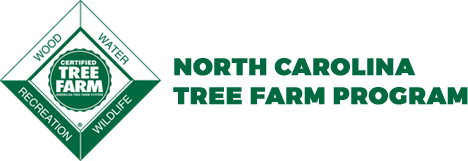Bottomland Forest Management
Because managing bottomland forests occurs over a long period of time, owners of these forests are encouraged to keep especially good records including photos. Also, in order to comply with the rules governing forestry activities in wetlands, a landowner may need to produce documentation and evidence of ongoing management if requested.
Bottomland Hardwood Management (Mississippi State University Extension)
Hardwood species selection is one of the most demanding forestry management tasks for private landowners and forest managers. This article discusses correctly matching species to sites.
The Importance of Bottomland Hardwood Forests for Wildlife (University of Florida Extension)
Both natural events and human activities can influence the suitability of bottomland forests for wildlife. Four factors within the control of humans that can affect these forests are water, fire, invasive species, and vegetation management activities. Learn how to manage these factors to benefit wildlife here.
Managing and Regenerating Timber in Bottomland Swamps (N.C. Forest Service)
This Forestry Leaflet from the North Carolina Forest Service provides a list of tree species commonly found in North Carolina’s bottomland forests as well as general guidance on regenerating and harvesting in swamp forests.
Planting Cypress and Tupelo Seedlings for Reforestation in Deep Swamps (N.C. Forest Service)
Reforestation can be challenging in these types of swamps due to their unique characteristics including very soft, mucky soil and the presence of standing water for much of the year. This leaflet focuses on establishing seedlings to regenerate these primary tree species of focus: Bald cypress, Pond cypress, Water tupelo, and Swamp tupelo.
Natural Reforestation in Cypress-Tupelo Swamps (N.C. Forest Service)
This Forestry Leaflet discusses differences in swamp types and species, the role of wildlife in seed dispersal, the idea of stump sprouting and landscape assessment of a site.
Harvesting Timber Using the Shovel-Mat Logging Method (N.C. Forest Service)
Harvesting timber in bottomlands, swamps and other low-lying areas usually requires specialized logging equipment and methods. The most frequently-used method is known as ‘shovel logging’, also called ‘mat logging’. This Forestry Leaflet discusses recommendations and considerations for this method.
Bird-Friendly Bottomland Forest Recommendations (Southern Regional Extension Forestry webinar)
This webinar provides information to forest managers describing ways to manage bottomlands to create and sustain habitat vital to birds in the greatest need of it, while also generating revenue for landowners.
A Guide to Bottomland Hardwood Restoration (USDI, USGS, USDA Forest Service)
This 14-chapter guide provides information for landowners on how to establish bottomland hardwood forests on lands where they previously existed. It covers an introduction to bottomland hardwoods, the benefits of these forests, considerations and planning for restoration, evaluating the selected site, selecting tree species to plant, and management activities.
Bird-friendly BMPs for Bottomland Forests in the Carolinas (Audubon)
Riparian forest buffers along streams, rivers and wetlands, provide prime habitat for a great diversity of plants and animals. Birds use riparian buffers during migration, as well as during the breeding season.
